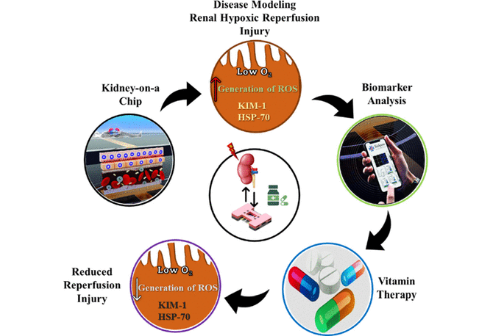Seoul National University Bundang Hospital (SNUBH) said on Wednesday its team of researchers successfully built a renal hypoxic-reperfusion (RHR) injury model and found that combinational vitamin therapy can decrease the chances of RHR injury.

Acute renal injury, which weakens kidney function due to sudden damage to kidney cells, occurs in about 10 percent of patients admitted to hospitals. With acute kidney damage, toxic waste products are not excreted and accumulate in the body, so early detection is critical for immediate treatment. If early treatment fails, irreversible damage leading to dialysis or death can occur. The three main causes of acute renal injury are drug-induced renal injury, ischemic renal injury, and sepsis renal injury.
According to SNUBH, the RHR model has mainly been conducted through animal experiments, but maintaining these ischemic conditions in a laboratory setting can be inaccurate as external conditions such as laboratory temperature and humidity vary. However, 3-D tissue chips can maintain constant ischemic conditions by controlling the oxygen partial pressure of cell culture fluid. Additionally, they are more useful than animal experimental models for predicting human reactions because they use human cells.
Accordingly, Professor Kim Se-joong of Seoul National University Bundang Hospital and CEO Choi Kyung-hyun of BioSpero jointly developed an ischemic environment by cultivating human kidney cells and vascular cells on three-dimensional tissue chips by controlling oxygen pressure within the cell culture.
Cell damage can be verified by implementing the microenvironment of human kidneys with tissue chips, and the degree of damage to kidney cells can be evaluated in real time through sensors, allowing the drug's effect to be accurately identified.
The disease model was validated by estimating various specific hypoxic biomarkers of RHR. Furthermore, retinol, ascorbic acid, and the researchers found that combinational vitamin therapy can decrease the chances of RHR injury.
Professor Kim who led the study said, "This study provides a platform to compare and evaluate the effects of treatments with various antioxidant effects as well as the pathophysiology of renal ischemic -reperfusion injury by reproducing the microenvironment in humans on tissue chips."
The study was published in the latest issue of ASC Biomaterials Science & Engineering.
Related articles
- Brain chip developed to control behavior of mice
- SNUBH develops 3D tissue chip to evaluate toxic CT contrast agents
- Theragen Bio conducts genome information production project of ‘Korean Chip 2.0’
- SNUBH performs successful BABA robotic thyroid surgery on 5-year-old patient
- SNUBH develops AI-powered X-ray analysis that can diagnose sleep apnea

